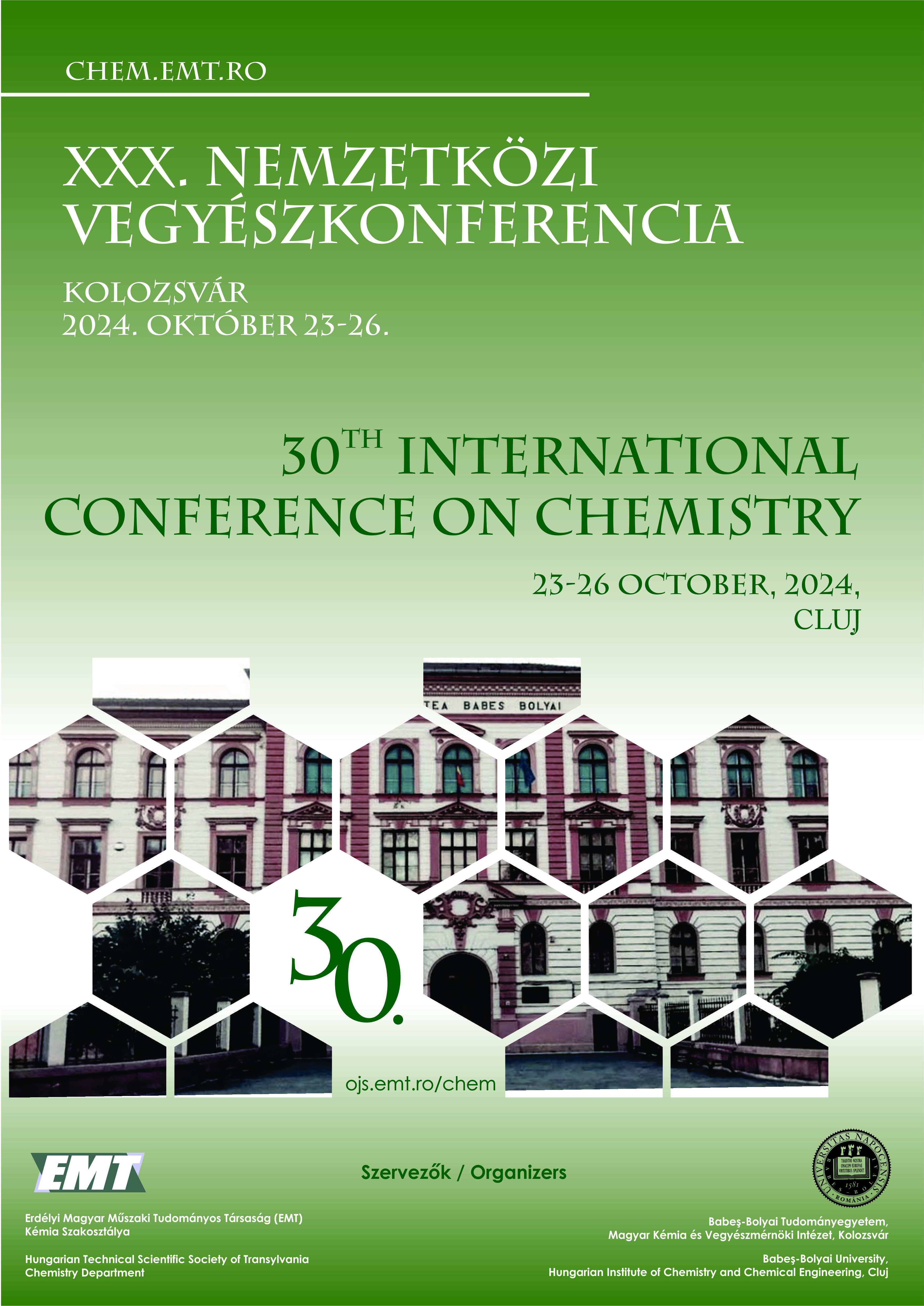A metilénkék és új analógjának adszorpciója. Összehasonlító tanulmány
Adsorption of Methylene Blue and its novel analogue. A comparative study
Keywords:
adsorption, organic dyes, kinetic and thermodynamic aspects, /, adszorpció, szerves színezékek, kinetikai és termodinamikai szempontokAbstract
ABSTRACT
This study compares the kinetic and thermodynamic features of the adsorption of methylene blue and its recently synthetized analogue (3,7-bis(bis(2-hydroxyethyl)amino)phenothiazine-5-ium iodide), from their aqueous solutions, on commercially available filter paper.
Triplicate batch experiments were monitored photometrically. The testing of various kinetic models proved that, even though the rate determining step is mainly the intraparticle diffusion, the pseudo-second order rate law fitted best the overall process for both dyes. Equilibrium data favored both the Langmuir and Freundlich isotherms, whereas the effect of increased temperatures on the rates as well as yield of adsorption suggested physisorption as the mechanism of both adsorbates retainment by the adsorbent.
ÖSSZEFOGLALÓ
Ez a tanulmány összehasonlítja a metilénkék és a nemrégiben szintetizált analógja (3,7-bisz(bisz(2-hidroxietil)amino)fenotiazin-5-ium-jodid) vizes oldataikból történő adszorpciójának kinetikai és termodinamikai jellemzőit, egy kereskedelemben kapható szűrőpapíron.
A háromszoros ismétlésben elvégzett kísérletek fotometriásan lettek megfigyelve. A különböző kinetikai modellek tesztelése bebizonyította, hogy bár a sebességmeghatározó lépés elsősorban a részecskékben a diffúzió, mégis a pszeudo-másodrendű sebességtörvény illeszkedett a legjobban a teljes folyamathoz mindkét színezék esetében. Az egyensúlyi adatok mind a Langmuir-, mind a Freundlich-izotermáknak kedveztek, míg a megnövekedett hőmérsékletnek az adszorpció sebességére és hozamára gyakorolt hatása arra utalt, hogy a fiziszorpció mindkét adszorbátum adszorbens általi lekötésének mechanizmusa.


